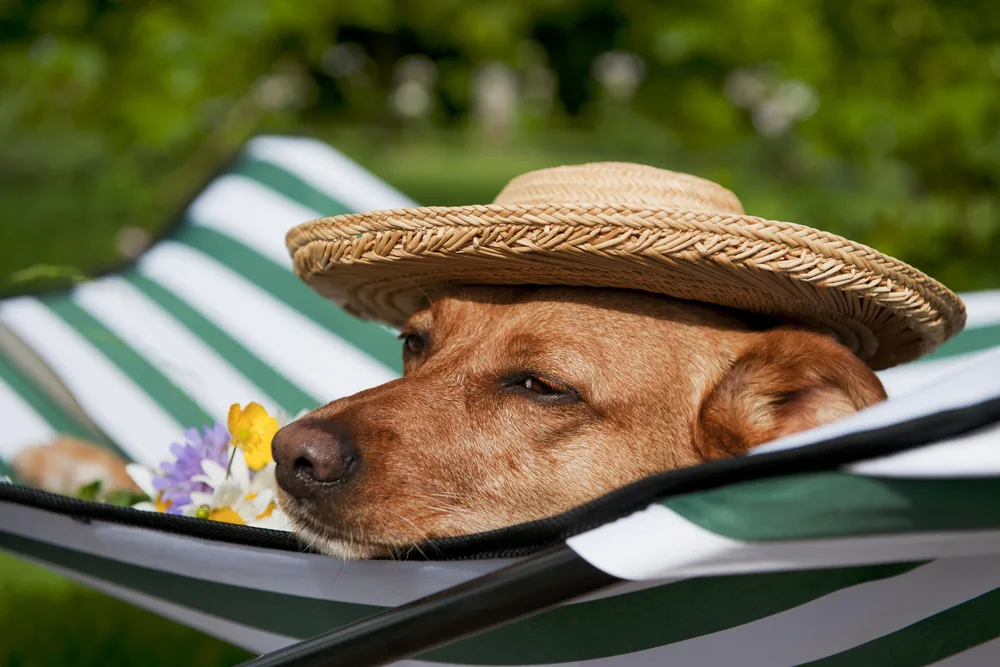During summer, most of our pet patients visit our Templestowe veterinary clinic because they have been overexposed to the harsh sun. In this blog, we are explaining the different health consequences that this exposure can have on your pet. We’ve also put together a quick 5-step grooming guide for owners to care for their pets during summer.
Sunburn
Pets can get sunburnt too! Whilst any breed of animal can get sunburnt, pets with white or lightly pigmented hair are particularly susceptible. Sun damage usually occurs where your pet’s hair coat is at its thinnest. For cats and rabbits, sunburn is most common on the tips of the ears, eyelids and noses; for dogs, sunburn is most common on muzzles, armpits, abdomens and groins.
Like humans, sunburnt pets will have skin that looks red and flaky. Longer term sun damage shows up as thickened or scarred skin with ulceration and crusting. This skin is also susceptible to secondary bacterial infections and sun cancers may also develop.
How to protect your pet from the sun – slip, slop, shade
- If you have an all-white or light coloured dog, or they have a thin coat, invest in sun-protective clothing. (Yes, they make sun shirts for pets!) Just make sure they don’t overheat in them.
- Use a pet-specific sunscreen (available in our East Kew veterinary clinic) to ward off sunburn. Apply as directed to vulnerable areas twice a day.
- Try to keep your pets out of the sun between 10am and 4pm. UV rays are at their strongest between these times so keep them in a well-shaded area of your yard or inside under the air con.
Pad burn
Did you know: When the air temperature is 25°C, the temperature of asphalt in the sun is 51°C. You can fry an egg at 55°C so imagine what that feels like on your dog’s feet!
The pads of your dog’s feet are as thick as the skin on the soles of your own feet, so walking your dog on surfaces like asphalt, concrete and brick during the summer months can burn the skin in as little as 60 seconds.
The best way to test if the pavement is too hot for walking your dog is to press your own hand onto the surface for 7-8 seconds. If it’s uncomfortable for you, then it will be uncomfortable for your dog.
Other summer walking tips to keep in mind:
- Walk your dog in the morning rather than the evening, as asphalt retains heat.
- Walk on dirt or grass paths which don’t soak up the heat at the same rate.
- Consider investing in protective booties for your dog.
Our summer grooming guide
- Get your dog a summer cut but make sure they are not shaved all the way down to the skin as this makes them susceptible to sunburn.
- Cats typically do not need to be shaved unless they are unable to groom themselves.
- Bathe your dog once every few weeks using pet-friendly shampoo. Bathing more often or with products meant for humans can cause irritation.
- Check in between your dog’s paw pads after they have been playing outdoors – burrs and grass seeds can work their way into the skin and cause irritation or infection.
- Summer is flea and tick season! Make sure your pet is up to date with their parasite control and chat with your vet if you’re planning on taking your pet to the beach (other parts of Victoria and Australia are home to different kinds of parasites).
Vets on Parker is a Templestowe veterinary clinic that is dedicated to supporting our community with helpful veterinary advice and services. Please don’t hesitate to book an appointment at our clinic today!


